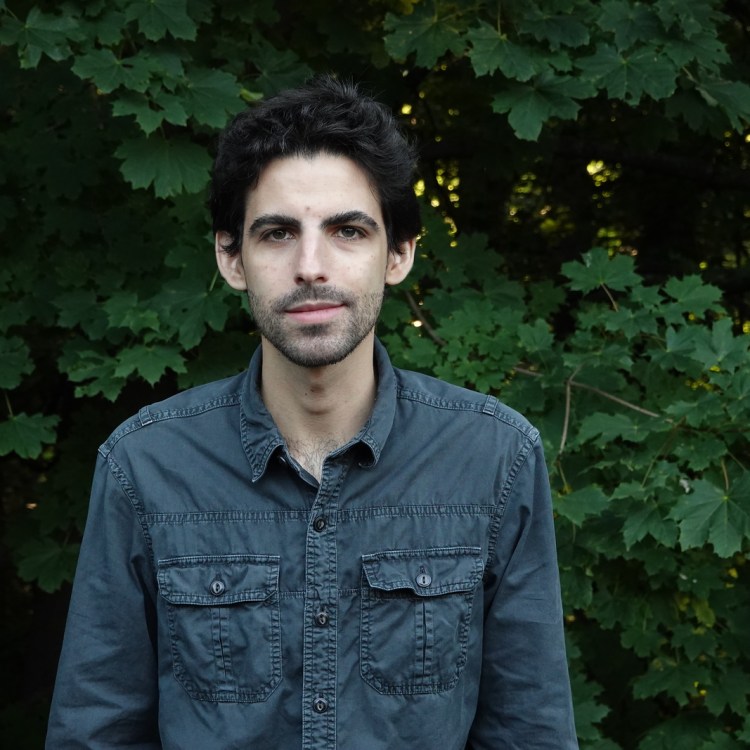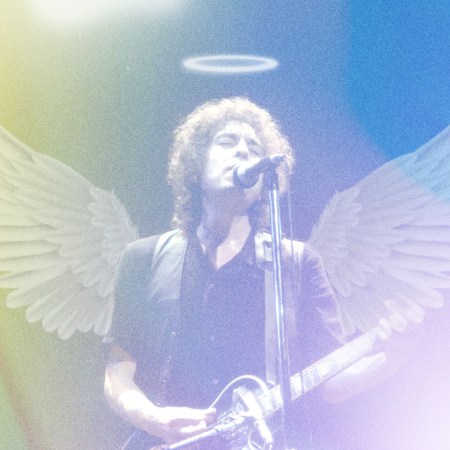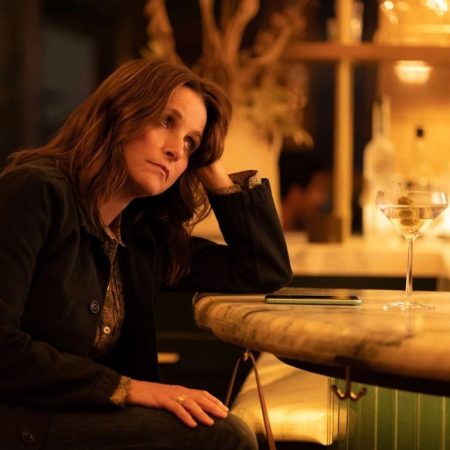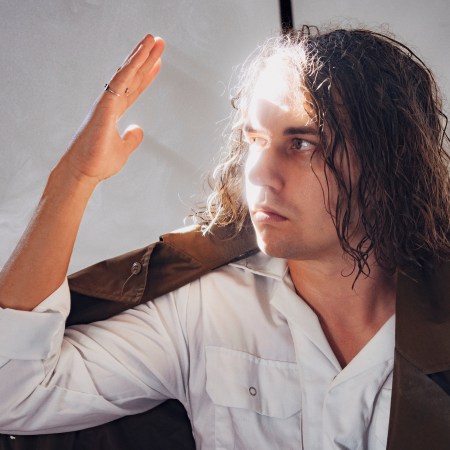Four years ago, Rabbi Pini Dunner was preparing a sermon to deliver on the last day of Pesach. He wanted to express that the ritual of a Seder night consists of “a prescriptive schedule, unchanged for over a millennium,” as he put it in his sermon, titled “Groundhog Day and the Jewish Experience.”
“I was looking for a nice allegory — some kind of illustration for the idea that Seder night is something that has been honed over many, many different tries. In fact, we improve it every year,” says Rabbi Dunner, who’s the Senior Rabbi of Beverly Hills Synagogue in California. “I used the film Groundhog Day as the method by which I could illustrate that point.”
Dunner is a longtime fan of the 1993 film, starring Bill Murray as an ornery, self-absorbed weatherman trapped in an inexplicable time loop, which forces him to relive the same day — Feb. 2, naturally — over and over. And he’s hardly the only rabbi using it as a Jewish text. In England, one rabbi compared it to the Book of Jonah in a sermon, hailing its moral lessons about doing good for others. In Illinois, another rabbi invited the film’s director, Harold Ramis, to speak at his synagogue several times before Ramis’s 2014 death.
In the decades since its release, the beloved comedy, which hit theaters 30 years ago this week, has enjoyed a remarkable religious afterlife. It has been embraced, analyzed and taught at every level by Jews, Buddhists, Jesuit priests and lord knows who else. Its themes — cosmic comeuppance; rebirth and cyclical suffering; existential angst; gradually learning to be a kinder person — resonate with a myriad of faiths, all of whom interpret it as a representation of their teachings.
It’s hard to think of another wholly secular movie that has attracted such a devoted and long-lasting religious following. Dunner cites The Matrix and The Truman Show as other examples. Yet there is something uniquely resonant, and malleable, about Groundhog Day.
“It’s kind of quirky. It’s kind of eclectic. It’s a little bit of a strange film. Judaism, I think, is somewhat like that,” says Rabbi Niles Goldstein, who is the rabbi of Congregation Beth Shalom in Napa, California and the author of several books, including Gonzo Judaism: A Bold Path for Renewing an Ancient Faith.
“We don’t have many movies that are Buddhist,” says Rev. Tenku Ruff, a Soto Zen Buddhist priest and practitioner. “When we do have them, they’re not funny and not mainstream American movies. The continuous cycle of birth and death, which is a really core tenet of Buddhism — that really comes across in the movie. He’s stuck in the same day. We’re stuck in the cycle of existence; we’re born and then we die.”
Uplifting? Maybe not. And yet, Rev. Ruff says, “In teaching about Buddhism, people initially find the idea of impermanence scary. But one of the things we can come to understand is that we always have another chance. That’s what I was really struck by with the movie. We’re not stuck in the way that we are. If we’re a jerk, we’re not stuck in being a jerk.”
Meanwhile, to Rabbi Dunner, the film reflects the teachings of the 19th-century Jewish thinker Israel Salanter, the founder of the Musar movement, an influential Jewish ethics movement. “One of the themes that Musar teachers explored was that people do the same thing day in and day out, without considering that if they would just change some small thing in their behavior, their lives would improve exponentially,” he says. “I was very taken with the idea that this fellow [Phil Connors] has the opportunity to hone all the things he’s doing wrong until he gets it right.”
It’s tempting to think Danny Rubin, the screenwriter behind Groundhog Day, had this all planned out: Write a mainstream comedy full of philosophical and spiritual underpinnings, wait for the religious scholars to start discussing and screening it, sit back and let the residuals roll in.
But that wasn’t his plan. He just wanted to write a good movie.
“I was not shooting for a religious parable or anything necessarily profound when I wrote the original screenplay,” Rubin tells me via email. “I just wanted to be entertaining, to offer up clever surprises and delights. But to me being entertaining includes having something real and relatable in the story, which is why I didn’t feel compelled to write the script when it was just an idea about a person repeating a day.
“When I merged that idea with another one I had about immortality (eternity experienced as an unending, repeating day), that’s when it became a story about human growth,” Rubin continues. “For me it became Siddhartha, the story of a journey through life.” (Though rumors have circulated that Rubin was influenced by the Armenian philosopher/mystic George Gurdjieff, the screenwriter has actually never heard of him.)
Nobody knows exactly when Groundhog Day developed a devoted religious following. Buddhist scholars have had an interest in the film for decades. In their interpretation, the story’s repetition — Phil Connors wakes each morning in the same inn, on the same day, with the same song (“I Got You Babe”) blaring from his clock radio — serves as a cinematic metaphor for the Buddhist idea of saṃsāra, the continuous cycle of life, death and rebirth, which is defined by suffering.
“Buddhists are not into the idea that the world is a joyous place,” says Angela Zito, an associate professor of Anthropology and Religious Studies and co-director of the Center for Religion and Media at New York University. “Fundamentally, they think of this as a place of suffering. An endless cycle of suffering.”
Bill Murray’s character would surely agree. For much of the movie’s loop, he’s miserable. After exploiting his consequence-free situation to pursue worldly pleasures like sex and binge-eating, he descends into nihilism and despair; he tries repeatedly to kill himself, though he always wakes up anew.
By the end, he transcends this misery and finds meaning in doing good for other people, whose struggles and needs he’s had plenty of time to memorize. (Including, of course, the love interest played by Andie MacDowell.)
In Jewish terms, you might say that Phil Connors is performing mitzvahs: catching a boy who falls from a tree, saving a man from choking in a restaurant.
“The repetitive nature of the scenes really reminded me of an ancient Jewish teaching. In Hebrew, it’s mitzvah goreret mitzvah, which basically means, ‘One mitzvah leads to another,’” says Rabbi Goldstein. “That our job is to constantly try to make the world a better place through our interactions in it. His character is lucky enough that he gets multiple chances to do the right thing.”
But in Mahayana Buddhist terms, he is “something called a Bodhisattva,” says Dr. Zito. “For Mahayanas, you don’t seek personal enlightenment. You reach enlightenment, but then you take a vow to come back, to work for the enlightenment of all sentient beings. In other words, through all of his incarnations in the film, he gets better and better and better. Then he finally breaks out of that. But he never dies. Instead, he comes back to where he started — to the town. And so he’s going to be his new and improved Bodhisattva self, and work for that community.”
When it first came out, Dr. Zito thought Groundhog Day was a cute and unusual film. She didn’t consider it profound. “Later, I did,” she recalls. “Later, as I was casting about for a good way to end an introductory course, I thought, ‘Oh, this would be a really nice thing to do.’”
By 1999, the professor was regularly assigning Groundhog Day to students in her Buddhism class at NYU, an end-of-the-semester treat. The students “really loved seeing it, and they got the point,” she says.
A few years later, in 2001, Groundhog Day was screened as part of a Buddhist film series organized by Michael Wenger, a Sōtō Zen priest who was then the dean of Buddhist studies at the San Francisco Zen Center. In a subsequent lecture, Wenger argued that Groundhog Day not only illustrates the law of karma, but also “parallels Buddhist practice.”
Rev. Tenku Ruff, who was present at that film series, says, “If I were looking for a Buddhist film, and came upon all of the choices of these very navel-gazing films, this one would feel like a breath of fresh air.”
Bill Murray Returns to “Groundhog Day” in Jeep Commercial
Also returning? Character actor Stephen Tobolowsky.By 2003, the word was out: The New York Times published a piece about the myriad religious interpretations of Groundhog Day — Buddhists, Jews, even Jesuit priests expressing a “strong spiritual kinship” with the film’s message.
“When all of the religious perspectives started to roll in, both Harold Ramis and I were big-grin delighted,” Danny Rubin says, “but not completely surprised.”
Indeed, Ramis, who was raised Jewish but influenced later in life by his second wife’s Buddhist beliefs (“I’m Buddh-ish,” he reportedly liked to say, George Santos-style), welcomed such far-flung interpretations. Ramis had long been interested in directing what he called “redemption comedies,” and Groundhog Day ushered in that phase of his career (see also: Bedazzled).
In 2003, he told the Times, “At first I would get mail saying, ‘Oh, you must be a Christian, because the movie so beautifully expresses Christian belief.’ Then rabbis started calling from all over, saying they were preaching the film as their next sermon. And the Buddhists! Well, I knew they loved it, because my mother-in-law has lived in a Buddhist meditation center for 30 years.”
Among the religious figures quoted in the story was Niles Goldstein, the aforementioned Napa rabbi, who observed that Murray’s character “is rewarded by being returned to earth to perform more mitzvahs — good deeds — rather than gaining a place in heaven, which is the Christian reward.”
Thirty years after the film’s release (and nearly a decade after Ramis’s death), Rabbi Goldstein remains fascinated by Groundhog Day’s seemingly endless applications in the spiritual realm.
“Every once in a while, a book or poem or piece of music or play resonates in ways that we don’t always expect,” he says. “Why is it that the ‘Ode to Joy’ in Beethoven’s ninth symphony speaks to so many different people as this spiritually transporting movement? I don’t know why Groundhog Day resonates with so many different faith traditions as a secular film. It just does. I think art at its best sometimes is able to do that. In fact, I think the lines between creative inspiration and spiritual revelation can be very porous. And every once in a while, a work of art seems to cross that line.”
Now, what time is the religious reappraisal of What About Bob?
This article appeared in an InsideHook newsletter. Sign up for free to get more on travel, wellness, style, drinking, and culture.

























